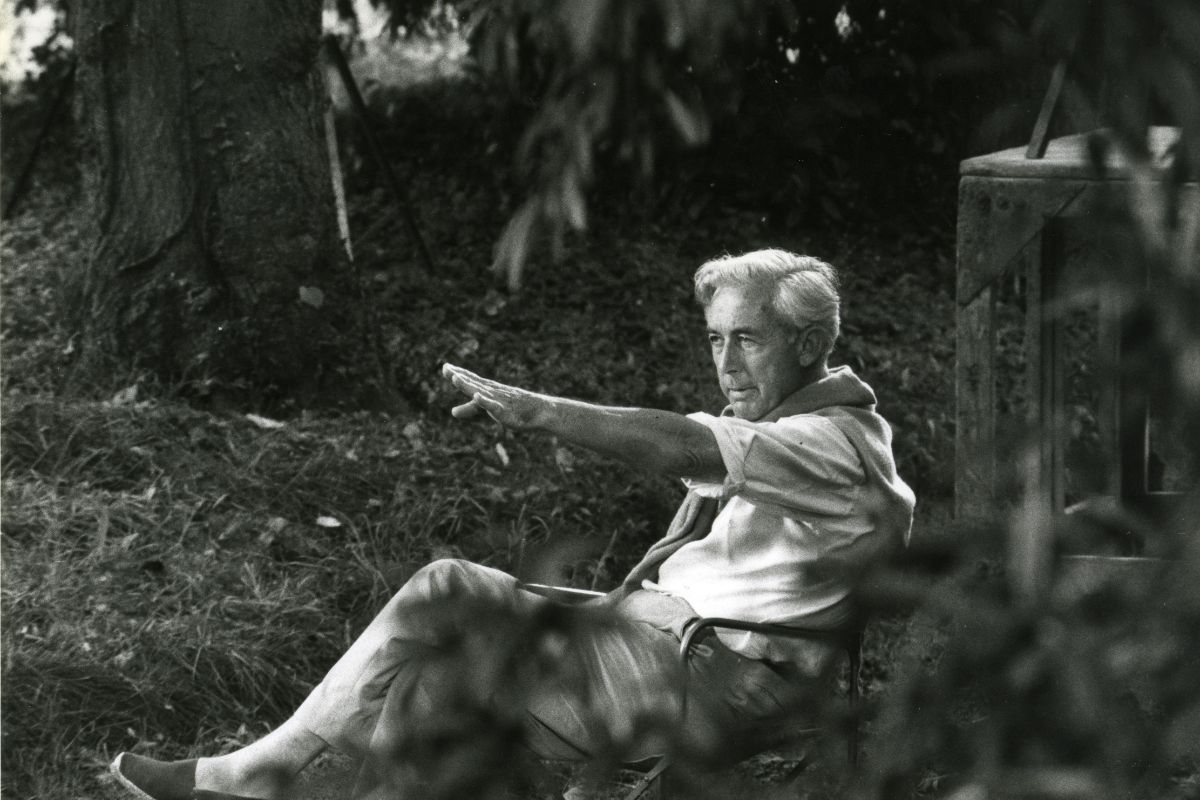
Published: : September 21, 2025, 10:24 AM

In an era of fast-paced, exaggerated films, Bresson’s cinema feels calm and peaceful like an open window on a rainy day…full of fresh air. Andrei Tarkovsky once called him “one of the few geniuses in cinema.” This genius was born on September 25, 1901, in the same era that gave birth to cinema itself. Bresson began his career as a painter then moved toward filmmaking. In Bresson's own words: “Painting taught me to make not beautiful images but necessary ones.” Bresson’s directorial career progressed slowly and in his long career, he made only 13 feature films. But each of them left its own mark. Bresson's films remain relevant today because they remind us what cinema can be when it is able to slow down - when it chooses silence over sound, restraint over extravagance, and, most importantly, purity over manipulation. Bressonian films invite us into a space where nothing is overstated—and yet everything feels true.
To distinguish his approach from traditional filmmaking, Bresson called his art "cinematography". His aim was to separate filmmaking from the other arts that preceded it. Once he wrote in his book “Notes on the Cinematograph”: “Monologue instead of dialogue. To move people not with images likely to move us, but with relations of images that render them both alive and moving.” He preferred monologue rather than dialogue, because in conventional cinema, dialogue serves to explain, to dramatise…. Bresson wanted none of that. His characters often speak in solitary phrases, not to others, but to themselves. His films flourished under limitations, and within these self-imposed restrictions, Bresson created something deeply original.
One of the most unique elements of Bresson’s filmmaking techniques was his complete rejection of theatrical acting. His actors weren’t actors at all; he referred to them as models. He conditioned them to speak their dialogues as if rehearsing to themselves. Movement was also devoid of purpose. Most of the time, faces were emotionless. But hands? Hands were expressive. In Bresson’s view, hands act without our conscious effort. Bresson believed that hands portray truths beyond what faces—trying to “perform”—shaped to do. In the pickpocketing scenes of Pickpocket, rather than showing Michel’s face and emotional response, Bresson focuses the camera on his hands. In extreme close-up, we see his hands as they slip into jackets, brush against wallets, and trade stolen goods with other thieves. We see hands move with balletic grace and precise control, each motion unveiling Michel’s inner world more than words could expose. Michel displays a calm grace, his movements relaxed, but his control distant and unemotional—echoing the emotional friction he faces in society.
Perhaps the most effective techniques in his aesthetic were suggestive framing and off-screen action. In A Man Escaped, we never see the execution; we only hear it. In Au Hasard Balthazar, the most emotionally devastating moments occur off-screen: the fall of the donkey and the still gaze of the child. He relied more on the audience’s imagination than on the camera. This act of withholding provides a new form of involvement: we, as the audience, actively feel what we don’t see.
To understand Bresson’s cinema, one must first hear. Not only the words spoken, but the gap in between, the silence. In his films, silence is not an absence; rather, it is a space full of possibility. Silence can be rhythmic. The sound can be the silence’s wake, a step, or a distant train’s whistle. The sound of a train has a lot more to offer than the image of a train; in fact, Bresson emphasised the notion that sound has greater importance than visuals.
He once said, “Imagine the sound of a train coming into a station. When you hear that, so many images come to mind, you imagine the train, the station, the people - One sound can evoke all of that.” He used sound to isolate characters, to guide perception, and, most importantly, to allow viewers to feel first and understand later—a belief he clearly stated in his Pickpocket interview: “I would prefer for a film to be felt before it is understood.”
There is a philosophical basis behind all of Bresson's techniques: film is defined not by its parts, but by their relations. IMAGES, SOUNDS, GESTURES…. all of these elements work together. So, Bresson’s films must be felt as a whole. This holistic vision explains Bresson’s obsessive control in the editing room. He would put together everything to a specific rhythm—one that is not always visible, but always felt. It’s what gives his work its strange tension and quiet intensity.
Over the years, Bresson has inspired filmmakers like Andrei Tarkovsky, Chantal Akerman, Jean Eustache, Abel Ferrara, Philippe Garrel, Hal Hartley, Monte Hellman, Jim Jarmusch, Louis Malle, Michael Haneke, Aki Kaurismäki, and Paul Schrader, among many others. As one of Bresson’s greatest admirers, Jean-Luc Godard once stated: “He is the French cinema, as Dostoevsky is the Russian novel and Mozart is German music.”
Bresson always wanted to create a new reality—one that only cinema could express. Once, he said in an interview, “I feel very alone. But I take no pleasure in feeling alone.” That solitude is present in every frame of his films. While watching Bresson’s films, I wonder how silence can convey more than words, how restraint can capture beauty, and how a simple gesture can convey a world… Moreover, Bresson’s films feel so PURE and so TRUE that they almost feel like experiencing REAL LIFE…